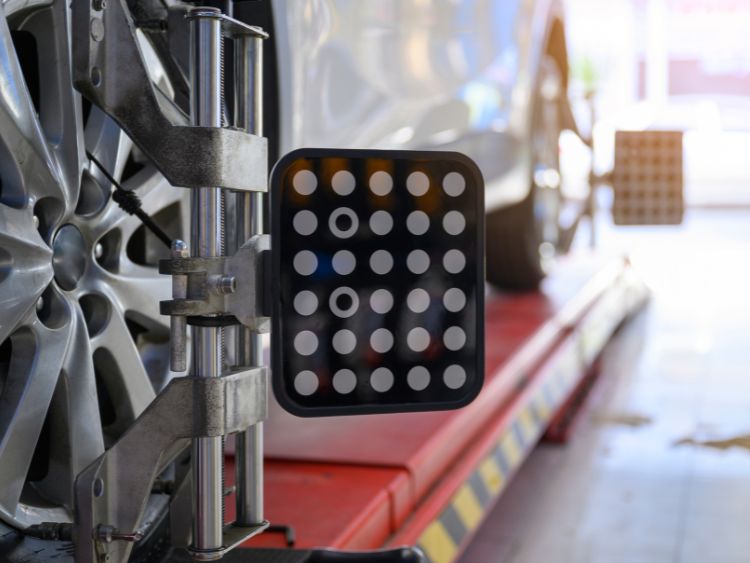Ever felt your car pulling to one side or experienced a shaky ride at high speeds? These common issues often point to problems with your wheel alignment or balance. But what’s the difference between the two? Understanding the nuances of wheel alignment vs. balance can save you time, money, and ensure a smoother, safer driving experience. So, buckle up as we delve into the world of automotive care, explaining everything you need to know about these essential services.
What is Wheel Alignment?
Wheel alignment, also known as tire alignment, refers to adjusting the angles of the wheels so that they are set to the manufacturer’s specifications. This ensures that your vehicle drives straight and true. Here’s what wheel alignment involves:
Components of Wheel Alignment
- Camber: The inward or outward angle of the tire when viewed from the front of the vehicle.
- Toe: The extent to which the tires turn inward or outward when viewed from above.
- Caster: The angle of the steering axis when viewed from the side of the vehicle.
Benefits of Proper Wheel Alignment
- Improved Handling: Proper alignment ensures that your vehicle handles correctly, making it easier to steer.
- Increased Tire Lifespan: Misalignment can cause uneven tire wear, shortening their lifespan.
- Better Fuel Efficiency: When wheels are aligned, there’s less rolling resistance, which can improve fuel efficiency.
- Safety: Proper alignment ensures your vehicle drives straight, reducing the risk of accidents.
What is Wheel Balancing?
Wheel balancing, on the other hand, ensures that the weight of the wheel and tire is evenly distributed around the axle. This process involves:
Steps in Wheel Balancing
- Mounting the Wheel on a Balancer: The wheel is placed on a machine that spins it to identify where the weight imbalance is.
- Adding Weights: Small weights are added to the rim to counterbalance any heavy spots.
Benefits of Wheel Balancing
- Smooth Ride: Balanced wheels eliminate vibrations that can make your ride uncomfortable.
- Prevent Tire Wear: Just like alignment, balancing prevents uneven tire wear.
- Protects Suspension: Reducing vibrations helps in protecting the suspension and steering components.
Wheel Alignment vs. Balance: Key Differences
While both wheel alignment and balance are crucial for optimal vehicle performance, they address different issues.
Purpose
- Wheel Alignment: Adjusts the angles of the wheels to the correct position.
- Wheel Balancing: Ensures even distribution of weight around the wheel.
Symptoms of Problems
- Alignment Issues: Vehicle pulls to one side, uneven tire wear, crooked steering wheel.
- Balancing Issues: Vibrations in the steering wheel, seat, or floorboard, uneven tire wear.
Frequency of Service
- Wheel Alignment: Typically needed every 6,000 miles or when new tires are installed.
- Wheel Balancing: Recommended every 3,000 to 6,000 miles or during every tire rotation.
How to Know When You Need Wheel Alignment or Balancing?
Signs You Need Wheel Alignment
- Vehicle Pulling to One Side: If your car drifts to the left or right, it’s a clear sign that your wheels are out of alignment.
- Uneven Tire Wear: Tires wearing out more on one side than the other indicate alignment issues.
- Steering Wheel Vibration: A vibrating steering wheel can sometimes indicate alignment problems, though this is more often a sign of imbalance.
Signs You Need Wheel Balancing
- Vibrations: Noticeable vibrations in the steering wheel, seat, or floorboard, especially at higher speeds, indicate unbalanced wheels.
- Tire Noise: Excessive noise from the tires can be a sign that they are not balanced properly.
- Uneven Tire Wear: Similar to alignment issues, unbalanced wheels can cause uneven tire wear.
The Process of Wheel Alignment
Wondering what happens during a wheel alignment? Here’s a step-by-step guide:
Steps in Wheel Alignment
- Initial Inspection: The technician will check for any wear and tear in the suspension system.
- Measure Alignment Angles: Using specialized equipment, the current alignment angles are measured.
- Adjust the Angles: The technician will adjust camber, toe, and caster angles to match the manufacturer’s specifications.
- Test Drive: Finally, a test drive ensures that the alignment is correct and the vehicle drives smoothly.
The Process of Wheel Balancing
Balancing your wheels involves a simpler process compared to alignment. Here’s how it’s done:
Steps in Wheel Balancing
- Mounting the Wheel: The wheel is mounted on a balancing machine.
- Spinning the Wheel: The machine spins the wheel to identify where weights need to be added.
- Adding Weights: Weights are added to the wheel to balance it.
- Re-check: The wheel is spun again to ensure it is balanced correctly.
DIY Wheel Alignment and Balancing: Is it Possible?
While it’s always best to have professionals handle these tasks, understanding the basics can be helpful. Here’s a brief overview of DIY methods.
DIY Wheel Alignment
- Tools Needed: Car jack, wrench, tape measure, and alignment gauge.
- Procedure: Lift the vehicle, measure and adjust the angles as needed.
DIY Wheel Balancing
- Tools Needed: Balancing machine (usually not available to DIYers).
- Procedure: It’s best to leave this to professionals due to the precision required.
FAQs
What happens if I ignore wheel alignment or balancing issues?
Ignoring these issues can lead to severe tire damage, unsafe driving conditions, and costly repairs in the long run.
How often should I check my wheel alignment and balance?
It’s advisable to check your wheel alignment every 6,000 miles and balance every 3,000 to 6,000 miles, or during every tire rotation.
Can poor alignment affect fuel efficiency?
Yes, improper alignment increases rolling resistance, which can lead to higher fuel consumption.
Do I need an alignment after getting new tires?
Yes, it’s recommended to align your wheels after installing new tires to ensure they wear evenly and last longer.
How much does wheel alignment and balancing cost?
The cost can vary depending on the vehicle and service provider, but wheel alignment typically ranges from $50 to $100, and balancing from $10 to $50 per tire.
Summary
Understanding the differences between wheel alignment and balancing is crucial for maintaining your vehicle’s performance and safety. Regular checks and maintenance can prevent uneven tire wear, improve fuel efficiency, and provide a smoother ride. So, the next time your car feels off, remember to check both alignment and balance to keep everything running smoothly.







